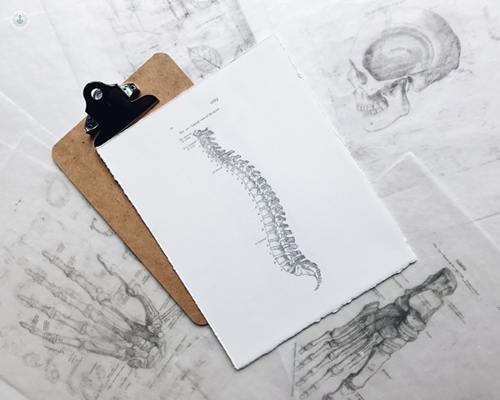Maximise recovery from robotic spinal fusion surgery
Escrito por:Spinal fusion surgery is a procedure used to treat conditions like chronic back pain, scoliosis, or degenerative disc disease by permanently connecting two or more vertebrae in the spine. In recent years, robotic-assisted surgery has revolutionised spinal fusion by offering greater precision, shorter recovery times and improved outcomes for patients.

What is robotic-assisted spinal fusion surgery?
Robotic-assisted spinal fusion uses advanced technology to assist surgeons in placing implants, screws, or rods into the spine with pinpoint accuracy. A robotic system works in tandem with 3D imaging to create a detailed map of the patient’s spine, allowing the surgeon to plan the procedure with enhanced precision.
Key features include:
- Preoperative planning: The robotic system analyses detailed imaging scans to develop a tailored surgical approach.
- Real-time navigation: During the procedure, the robot provides guidance to ensure accurate placement of implants.
- Minimally invasive techniques: Robotic assistance often allows for smaller incisions and less disruption to surrounding tissue.
What are the benefits of robotic-assisted spinal fusion surgery?
Patients undergoing robotic spinal fusion often experience significant advantages compared to traditional methods:
- Improved accuracy: Precise placement of implants reduces the risk of complications and enhances spinal stability.
- Smaller incisions: Minimally invasive techniques result in less scarring, lower risk of infection, and faster healing.
- Reduced operating time: Enhanced efficiency during surgery can shorten time under anaesthesia.
- Faster recovery: Patients often return to daily activities more quickly due to reduced post-operative pain and tissue damage.
Who is a candidate for robotic spinal fusion?
Robotic-assisted spinal fusion may be suitable for patients with:
- Degenerative disc disease or herniated discs.
- Scoliosis or other spinal deformities.
- Chronic back pain unresponsive to conservative treatments.
- Vertebral instability caused by fractures or arthritis.
A consultation with a spinal surgeon is essential to determine if robotic-assisted surgery is the right approach.
What’s involved in recovery and post-surgical care for robotic spinal fusion?
While robotic surgery enhances recovery, patients should still follow post-operative guidelines to ensure optimal healing:
- Physical therapy: Gradual strengthening of the back and core muscles is crucial.
- Activity restrictions: Avoid heavy lifting, twisting or bending during the initial recovery period.
- Follow-up appointments: Regular monitoring with the surgeon ensures the spine is healing properly.
How are spinal surgery outcomes advancing?
Robotic-assisted spinal fusion surgery is transforming how spinal conditions are treated, offering patients a safer and more efficient path to recovery. For those struggling with debilitating back pain or spinal instability, consulting with a specialist trained in robotic techniques can provide access to cutting-edge care and better long-term results.


